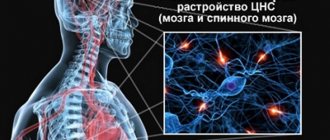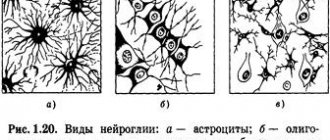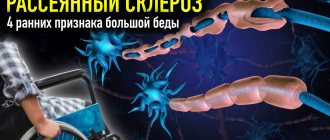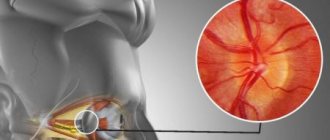Treatment of multiple sclerosis with stem cells is a long-term set of measures that includes undergoing a course of chemotherapy or blood purification (plasmapheresis) followed by the introduction of an agent into the patient’s bloodstream.
The goal of therapy is to “reboot the system.” This means that the immune system of a person suffering from MS is completely restored. Immune restoration has a positive effect on the intensity and frequency of symptoms of an autoimmune disease, in particular due to the ability of cells to integrate into demyelinated neurons. It is carried out when other methods are no longer effective.
Good results can be achieved when treating people with a relapsing-remitting form, as well as patients in whom the diagnosis was confirmed no more than 10 years ago. People suffering from the secondary progressive type and who have been ill for more than ten years do not observe any visible improvement.
Such results were recorded during a large-scale study by English doctors. Conclusions were formed based on observations of 151 people. within 1-5 years after undergoing therapy.
Replacement of stem cells in multiple sclerosis was also studied by American scientists in 2020. In laboratory conditions, the effectiveness of drugs for stimulating the regeneration of damaged nerve fibers of the spinal cord and brain was proven.
Note : To maximize the effectiveness of treatment, systematic administration of drugs that are also used in clinical practice to treat mycosis (Miconazole) and eczema (Clobetasol) is required. During the experiment (conducted on animals), they recorded the restoration of motor function during paralysis caused by the progression of MS.
The breakthrough was made possible by introducing a catalyst that helps create new myelin in the central nervous system of mice. Stem cell transplantation for multiple sclerosis is a modern approach to combating the disease. Today, stem tissues are introduced only using invasive techniques.
The procedure may be accompanied by side effects, incl. due to the need for chemical therapy (not practiced in all medical centers). A direct contraindication is irreversible pathologies of the kidneys and liver.
When is this method used?
At the current time, there are no methods of therapy that would lead to a cure for the disease. But the diagnosis of multiple sclerosis is treatable and responds quite well to therapy.
The goal of therapeutic intervention is to stabilize the course of the patient’s pathology , as well as to prevent recurrent exacerbations.
During exacerbations, medications from the group of glucocorticosteroid hormones (suppression of the immune response to the cellular structures of one’s own body), as well as plasmapheresis, aimed at removing autoantibodies from the patient’s body, are widely used.
Interferons and monoclonal antibodies are also used for treatment, but their use is expensive.
Therefore, in order to treat this pathological process, a new therapeutic method is increasingly being used - high-dose chemotherapy with further bone marrow (stem cell) transplantation.
Stem cells are cellular structures that undergo differentiation to form different types of cells . These structures, localized in the red bone marrow, are called hematopoietic (hematopoietic).
The drugs used in polychemotherapy ensure the destruction of antibodies directed against the body's own structures (in the disease in question - the myelin sheath of the nerves), and subsequent transplantation provides a functional restructuring of the immune system, the result is a stable course of the pathology in patients and a decrease in the frequency of exacerbations.
Donation
A bone marrow donor can be a person in the age range from 18 to 45 years, who does not have any mental disorders or contraindications to the collection of stem cell structures.
Persons with:
- infectious pathologies: HIV infection, syphilis, viral hepatitis, tuberculosis, brucellosis, typhus, tularemia, leprosy;
- parasitic pathologies: toxoplasmosis, echinococcosis, filariasis, leishmaniasis;
- malignant neoplasms;
- hematological pathologies;
- diseases of the cardiovascular system: high-grade arterial hypertension, coronary heart disease, atherosclerotic lesions, obliterating arteritis, thrombophlebitis, heart defects, inflammatory diseases of heart tissue;
- diseases of the respiratory tract: bronchial asthma, obstructive bronchitis, emphysema, severe diffuse sclerosis;
- pathologies of the gastrointestinal tract: gastric and duodenal ulcers, Achilles gastritis;
- diseases of the biliary tract: cholelithiasis, chronic liver pathologies of various origins, cirrhosis of the liver;
- pathologies of the urinary system: damage to the renal tissue, nephrolithiasis;
- connective tissue diseases;
- pathological conditions of the endocrine system;
- pathologies of the ENT organs: severe purulent-inflammatory diseases, acute or during an exacerbation of the chronic type of course, ozena;
- diseases of the organ of vision: high myopia (myopia), trachoma;
- diseases of the skin: fungal infections, psoriasis, pustular diseases.
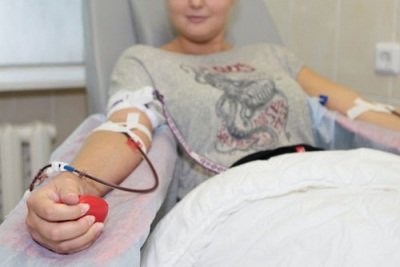
Hematopoietic stem cells can be collected in one of the following ways:
- From the bone marrow: under general anesthesia in a hospital setting, a puncture of the pelvic bone is performed using a special syringe. The duration of the operation does not exceed half an hour.
- From venous blood: a special medication is taken that promotes the release of hematopoietic cells into the systemic circulation, blood is taken from the vein, and it is processed with a special device that retains these cells. The rest of the blood is then transfused to the donor through a vein on the other limb.
Learn about lifestyle and nutrition with multiple sclerosis:
- do they take into the army with MS, do they give them disability;
- what exercises the patient needs, what is the importance of vitamins;
- what folk remedies and methods are used to treat the disease.
Factors influencing the occurrence of the disease
- fairly frequent infections of various origins;
- The relationship between immunization against hepatitis B and multiple sclerosis is not fully understood;
- labile human psyche, many stressful situations and, as a result, depression;
- geographical and environmental influence; according to statistics, the disease occurs more often in people living further from the equator;
- severe and frequent allergies of various etiologies;
- pre-existing autoimmune diseases and a severely weakened immune system.
Transplantation of hematopoietic cell structures
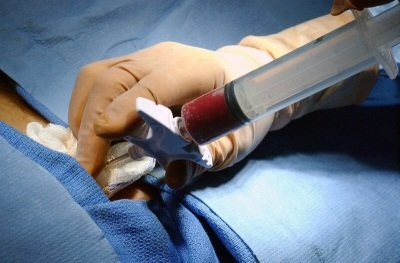
Transplantation of hematopoietic stem structures can be:
- autologous – material is collected and subsequently transplanted from the patient himself;
- allologous – stem cells are collected from a donor and subsequently transplanted into the patient.
Indications for transplantation of hematopoietic structures are:
- diagnosis of multiple sclerosis with progressive neurological symptoms over the past 12 months confirmed by clinical data and MRI results by more than 1 point on the EDSS scale;
- lack of effectiveness from previous combination treatment;
- age range from 18 to 45 years;
- age-sex and clinical-laboratory results corresponding to the norm;
- ability for self-care and independent movement.
Transplantation is not performed if:
- pregnancy period in MS;
- lactation period;
- severe concomitant pathology;
- pronounced deviations from age, sex and clinical laboratory results;
- life-threatening bleeding;
- mental status changes;
- presence of oncopathology;
- acute course of the inflammatory process localized in the oral cavity or in the paranasal sinuses.
The treatment program through transplantation of autologous structures includes:
- Carrying out two consecutive courses of immunocorrective therapy (Leukladin). The dosage of the medication is based on the patient’s body weight. The break between courses is 4 weeks.
- Collection of hematopoietic cells from the patient within 30-90 days after the end of the second course of therapy. Their freezing and storage.
- Conducting polychemotherapy using Cyclophosphamide and antimonocyte immunoglobulin. It is carried out after the second course of therapy with Leukladin (no later than 3 months).
- Hematopoietic stem cell transplantation.
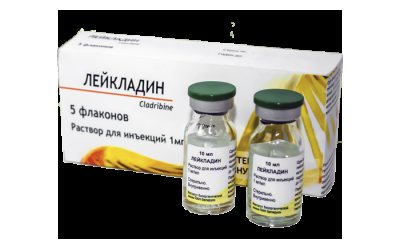
Possible side effects include:
- the occurrence of infectious and inflammatory diseases;
- the formation of thrombosis;
- dyspeptic disorders;
- impaired renal function.
Hematopoietic progenitor and stem cells in the treatment of multiple sclerosis:
Etiology of the disease
At the moment, an exact answer about the occurrence of this disease has not yet been found. What is clear is what influences the development of sclerosis, a series of unfavorable signs. These include various viral and microbial diseases, such as influenza, herpes virus type six, various bacterial infections, radiation exposure and toxic effects of substances, severe stressful situations. The heredity of this disease has not been proven, but some genetic pathologies can contribute to the development of multiple sclerosis. According to statistics, familial MS can occur in up to 10%.
Mesenchymal cell transfer technique
Mesenchymal cells are a population of cellular structures that can be isolated from various tissues of the body.
These cellular structures have greater plasticity than, for example, hematopoietic ones, and are capable of differentiating cells such as neurons.
The introduction of mesenchymal cells provides immunomodulatory and neuroprotective effects . Similar to transplantation of hematopoietic structures, this procedure can be either auto- or allologous.

Indications and contraindications, as well as possible adverse effects, are similar to those for transplantation of hematopoietic stem cell structures.
Mesenchymal stem cells are collected from the bone marrow by puncturing the sternum or iliac crest on both sides.
The resulting cell culture is processed using a separator. After this, the cells are cultured and the necessary tests are performed. The technique has not yet found such wide application as transplantation of bone marrow hematopoietic stem cell cultures.
Clinical picture
There is an opinion that a patient who already has sclerosis scars in the meninges will have virtually no symptoms of the disease. This happens due to the fact that healthy nerve cells take over the function of the sick ones. But when the damage to nerve fibers reaches about 50%, serious neuralgic changes begin. Symptoms begin to appear with several lesions of the spinal cord or brain. Signs of this disease may include a slight decrease in muscle strength or fatigue. If the disease involves damage to the cerebellum, then some inconsistency in the movements of the trunk and its limbs occurs. A typical lesion of this part of the brain manifests itself in muscle hypotonia. A common symptom of multiple sclerosis is palsy of the trigeminal, glossopharyngeal or facial nerves.
Sensitivity decreases during joint-muscular pain, squeezing and pressure on certain areas, as a rule, this manifests itself on the extremities. Another main symptom is complete or partial dysfunction of the pelvic organs. The visual system also suffers, visual acuity suffers, fields change, loss of brightness. The mental state suffers greatly: behavior is disrupted, intelligence is greatly reduced, dementia, impaired perception of emotions from euphoria to prolonged depression.
Simultaneous transplant
It is believed that simultaneous transplantation of hematopoietic and mesenchymal stem bone marrow structures is more effective than transplantation of each of these cultures separately.
Their introduction into the patient’s body is carried out in one day. The mesenchymal cell culture is administered 60 minutes before the start of the hematopoietic cell culture. Other infusions are stopped 60 minutes before the start of the latter.
Indications and contraindications for these manipulations are similar to those for transplantation of hematopoietic structures.
Symptomatic treatment
The symptoms of the disease are very diverse and affect the entire nervous system; signs can be typical and atypical. At the first symptoms, a person should visit a doctor. Signs of the disease are as follows:
- weakness, frequent fatigue of one of the limbs;
- loss or decrease in visual acuity in one of the eyes, a feeling of blurred vision, a cloudy dark spot;
- strong urge or delay to urinate;
- feeling of numbness in the limbs;
- gait disturbance;
- dizziness;
- nausea;
- doubling of images or lines.
These symptoms should prompt you to see a doctor. The treatment is carried out by a neurologist.
This type of treatment is an addition to the main prescriptions for exacerbation of multiple sclerosis. Therapy is prescribed according to the clinical manifestations depending on the specific symptoms.
In the acute phase, patients often complain of spasticity, which manifests itself in stiffness of the affected limbs or parts of the body, and reflex spasms.
They make it difficult for the patient to move and cause fatigue and immobility. Sleep disturbances or pain throughout the body are common.
To further preserve the functions of muscle tissue, it is important to continue to engage in physical therapy. Additionally, the doctor may prescribe physical procedures (electrophoresis, UHF therapy or ultraviolet irradiation) that help reduce inflammation of the joints and intoxication of the body, improve metabolic processes, and correct movement disorders.
There are general provisions according to which the doctor prescribes treatment:
- synthetic interferons (β-interferon);
- glucocorticoids. Prednisolone, dexamethasone, metypred or the hormonal drug ACTH;
- B vitamins, biostimulants, melin-forming drugs (Biosynax, Kronassial);
- cytostatics as a supplement: cyclophosphamide, azathioprine;
- muscle relaxants (mydocalm, lioresal, milliktin) are used to relieve muscle tone.
- numbness or weakness of the extremities, affecting part of the body, legs, torso
Pros and cons of the method

This provides a higher standard of living for patients suffering from this disease.
Multiple sclerosis is a pathology prone to gradual progression and deterioration in the standard of living of patients. For the purpose of treatment, it is possible to use a bone marrow stem cell transplant, but this procedure can only be performed in specialized centers.
Where can I do it?
- Eurodoctor Clinic provides treatment services in Turkey without intermediaries.
- https://eurodoctor.ru.
- Telephone.
- Honey. – only the best and proven clinics in Turkey. https://medicalhelpturkey.com.
- Tel: +90.
- Whatsapp: +90.
- Viber: +90.
- Skype: medicalhelpturkey.
Stem cell transplantation for multiple sclerosis: advantages and disadvantages
Multiple sclerosis is a pathology of the nervous system, which was previously considered incurable, but is now recognized as completely conquerable. A stem cell transplant for multiple sclerosis offers a chance for recovery. This innovative technique is not recognized in all countries.
However, it has already proven itself to be excellent - after the operation, people’s quality of life improves significantly. In the future, the issue of widespread introduction of this method of treating multiple sclerosis is being considered.
Causes and provoking factors
For a more complete understanding of how to choose the optimal treatment regimen for multiple sclerosis - whether it will be possible to perform a stem cell transplant, the doctor initially finds out the reason why the disease developed.
Experts have not reliably established why people develop multiple sclerosis. Most often the following provoking factors are indicated:
- genetic predisposition - if relatives have already had cases of multiple sclerosis, then the child may well develop the disease;
- excessive intellectual stress – work activity associated with the risk of psychological instability and severe stress;
- weakened immune system – frequent infections, especially those affecting brain structures;
- autoimmune diseases - the body perceives its own tissues as foreign, and produces protective cells against them, so there is a chronic inflammatory process that undermines the nervous system;
- bad habits – multiple sclerosis is observed in people whose experience of abusing alcohol and tobacco products exceeds 20-30 years.
Some experts consider a person’s residence in the northern regions and his attitude towards the white race to be provoking factors for multiple sclerosis.
Symptoms and signs
To begin treating a disease, you first need to recognize it. Since the pathology is based on damage to the nerve fibers along which impulses travel from the brain to the internal organs, the clinical picture will depend on in which part of the body the pathological focus has formed.
Manifestations of multiple sclerosis:
- trembling of the limbs - at first barely noticeable and periodic, it intensifies as the disease progresses, becoming widespread and prolonged;
- disturbance of the perception of the body in space - when moving, the feet seem to lose the feeling of solid ground, “walking on wobbly legs”;
- coordination of movements loses its clarity - from the outside a person may seem drunk;
- loss of control over the facial nerves - part of the face shifts to one side;
- tingling in certain areas of the skin - a feeling of numbness;
- pathological strengthening or weakening of muscle tone;
- failure in the process of urination - most often due to incontinence.
Neurological symptoms will be expressed in changes in the patient’s mood, tearfulness or euphoria, attacks of depression and decreased self-esteem.
Before deciding whether a stem cell transplant is permissible, the doctor must conduct a thorough neurological examination and instrumental studies of the nervous system.
Description of the transplantation technique
The uniqueness of stem cells is that they are already present in the human body and have the ability to differentiate into those areas of the body where they are located. In Russia, the transplantation technique for multiple sclerosis is standardized and officially approved.
Stem cell therapy for the disease leads to the restoration of the myelin sheath of the brain nerve fibers, which was damaged by foci of fibrous tissue. The transplantation technique also has a positive effect on the immune system, the state of which is important for the course of the disease.
Multiple sclerosis is treated with stem cells if previously carried out therapeutic measures - taking medications, physiotherapy, sanatorium-resort treatment - have not brought a significant improvement in the person’s condition. In this case, the collection of biomaterial for transplantation is carried out directly from the patient himself.
In this case, the risk is reduced:
- introduction of infections;
- provoking mutations in cells - the appearance of oncology;
- immunological mismatch.
In general, stem cell transplantation is a proven method that has previously been used to get rid of other diseases. It turned out to be promising for stopping pathological processes characteristic of multiple sclerosis.
Stages of transplantation
The procedure for restoring the myelin sheath of a nerve fiber by transplantation is the main goal of therapy for multiple sclerosis, and is carried out in three stages. As a rule, specialists first assess the initial state of a person’s health and determine the stage at which the disease is located.
Then you need to obtain biomaterial for transplantation - stem cells. To do this, blood is taken from a person - through a standard intravenous system it enters a specially designed device. It is he who helps differentiate the necessary ones from hundreds of thousands of blood cells.
There may be a small number of them in the peripheral bed. Sometimes, to obtain the required volume, 3–4 procedures are performed. The cells are then frozen and stored until transplantation.
At the second stage of transplantation, it is necessary to destroy immune cells already damaged by the pathological process. In order to solve this problem, the following is introduced into the human body:
- immunosuppressive medications - suppress unhealthy immune system activity that damages the myelin fiber of nerve endings;
- anti-inflammatory drugs - reduce the severity and extent of inflammatory foci in both the brain and spinal cord.
The complex effect allows you to prepare the human body for further stem cell transplantation. They are defrosted in a special mode and then enter the bloodstream through the intravenous system. All stages of transplantation are carried out in specialized hospital clinics.
What affects the outcome of treatment
In order for the treatment of multiple sclerosis with stem cells to produce a significant result - increasing the quality of life and improving the functioning of internal organs, a number of conditions must be met.
Even a 20-30% chance of transplant success is always better than nothing at all, which was a reality at the end of the 20th century in patients with multiple sclerosis.
Obtaining high transplant results is influenced by:
- stage of the disease;
- rate of disease progression;
- patient's age;
- tissue susceptibility to therapy;
- the presence of concomitant severe diseases.
Thus, people with the initial stage of multiple sclerosis have every chance of recovery if a stem cell transplant is performed in a timely manner. Regeneration of the myelin sheath of the nerve fiber after transplantation occurs much faster. The disease completely recedes.
Excellent results were demonstrated by people who had multiple sclerosis for no more than 7-8 years. After several transplantation sessions, even those areas whose damage was about 70-80% were restored.
If multiple sclerosis has a severe progressive course, then transplantation allows one to achieve a stage of long-term remission of the disease - mental activity improves, and movement disorders become less pronounced.
Cost of treatment
Of course, prices for transplant procedures can vary significantly from one region to another. The final cost of the transplant will be influenced by:
- level of medical institution;
- the need for an expensive preliminary examination;
- number of stem cell collection sessions;
- conducting additional consultations with other doctors.
Thus, Moscow centers offer similar services at the highest prices - up to 700-800 thousand rubles for transplant courses. While in other regions the cost may be lower. In foreign clinics, such treatment for multiple sclerosis is even more expensive.
The final cost of the transplant will be affected by the price of each stage of treatment - stem cell collection, the use of immunosuppressive medications, as well as the transplant itself. Such treatment should be trusted to truly trusted clinics with extensive experience in the treatment of multiple sclerosis.
Risk of complications and rejection
When a patient’s own stem cells are introduced into the patient’s body—autologous transplantation—the risk that rejection will occur is extremely low. After all, the immune system will perceive them as “family.”
An exception may be people with autoimmune pathologies - for example, systemic lupus erythematosus. In this case, additional immunosuppressive medications will be required.
Complications during transplantation are possible:
- if the amount of biomaterial is incorrectly selected;
- proper sterility was not observed during the procedure;
- the body was not previously prepared - a high concentration of already damaged immune cells in the bloodstream;
- the interval between the stages of introducing stem cells is not maintained.
However, the highest risk occurs if the patient receives stem cells from another person . Even death is possible. Therefore, many medical centers do not practice such stem cell transplantation at any stage of multiple sclerosis.
Expected result - video
Stem cell therapy for multiple sclerosis is a huge step in the treatment of pathology. The results of transplantation in people are usually observed by the end of the second or third month.
Effects of transplantation:
- chronic fatigue is eliminated;
- trembling in the limbs decreases;
- the mental state is normalized;
- confidence in future health appears;
- symptoms of urinary incontinence disappear;
- speech gains coherence and clarity;
- gait becomes more confident.
With early diagnosis of multiple sclerosis and timely administration of stem cells, complete recovery is possible - the disappearance of foci without myelin in the nerve fiber.
It is possible to defeat multiple sclerosis thanks to the technique of stem cell transplantation. However, transplantation requires specialized equipment and highly qualified doctors. Therefore, you should not delay seeking medical help.
Source: https://nevrology.net/sindromy-i-zabolevaniya/rasseyannyj-skleroz/peresadka-stvolovyh-kletok.html
Expected result - video
Stem cell therapy for multiple sclerosis is a huge step in the treatment of pathology. The results of transplantation in people are usually observed by the end of the second or third month.
Effects of transplantation:
- chronic fatigue is eliminated;
- trembling in the limbs decreases;
- the mental state is normalized;
- confidence in future health appears;
- symptoms of urinary incontinence disappear;
- speech gains coherence and clarity;
- gait becomes more confident.
With early diagnosis of multiple sclerosis and timely administration of stem cells, complete recovery is possible - the disappearance of foci without myelin in the nerve fiber.
- The Almazov Center performed a rare bone marrow transplantation for children
- Russia's first rehabilitation department for patients with MS opened at the hospital on Krestovsky
- In St. Petersburg you can get tested for antibodies to the SARS-CoV-2 coronavirus
First Honey is reviving the method of treating severe autoimmune diseases using the transplantation of one’s own stem cells. It is currently being used for patients with multiple sclerosis as part of a clinical trial. Although the method already has its own history.

— Alexey Yurievich, stem cell transplantation for patients with such an autoimmune disease as multiple sclerosis began in the world at the very beginning of this century. And they abandoned it very quickly. Why did you return to this method?
That is, at the beginning of the century, problems remained, and even today little has changed. Since transplantation was perceived as a therapy of despair, it was prescribed to those who did not respond to drug therapy. And these are years. As a result, the effectiveness of the transplant looked, to put it mildly, low, especially taking into account the expectations of patients who thought that after it they would start running.
Multiple sclerosis (MS) is an autoimmune disease that affects the myelin sheath of the nerve fibers of the brain and spinal cord, which leads to severe motor and other disorders, including profound disability.
— What do you know about the fates of those patients who underwent transplantation then?
— The experience of using hematopoietic stem cell transplantation for patients with multiple sclerosis has approximately the same history as that of DMTs (drugs that modify the course of multiple sclerosis). A total of 45 people received treatment with its use at our university. I talk and meet people who had transplants more than 15 years ago. Among those who underwent treatment in the 2000s, there are several people who received the method on time. In the spring, a woman came to me who had undergone HSCT at the age of 37. Now she is 51 years old - she came running in heels, she now has no limitations in function, only minimal symptoms detected during a neurological examination, which corresponds to 1 point on the EDSS scale (this scale is used to assess the degree of disability of the patient, in which up to 4.5 points - fully preserved mobility, above 7 - deep disability - Ed.). That is, everything, including HSCT, must be done on time and according to indications, and then there will be success, because with multiple sclerosis there is a simple formula - the fewer foci in the brain, that is, the lower the degree of disability, the more effective the treatment, if prescribed timely and targeted.
In those patients who were transplanted at the Research Institute named after. Gorbacheva with 6-7 points on the EDSS scale, over this long period the neurological status increased from 0 to 1.5 points. This suggests that anti-inflammatory therapy still played a role, and the progression of the disease in most of them was at least slowed down. Therefore, in addition to the hematological service, the determination of the neurologists who participated in the fate of the patients and recommended this method of treatment to them also requires great respect.
— If previously patients with multiple sclerosis were referred for HSCT when drug therapy was no longer effective, how does this happen now?
Of course, when communicating with a patient, we first try to explain that the existing principles of care for patients with multiple sclerosis in our country are completely justified, and sometimes patients are on DMT for a long time without relapse of the disease. If the patient insists, additional diagnostics and scrupulous work by specialists are required to determine the indications for using the method and to exclude other diseases similar to multiple sclerosis.
— What is the point of transfusing your cells in case of autoimmune diseases? The body will produce the same ones.
— What should a patient who would like to undergo a transplant do?
— Still, I would like the motivation to carry it out to come from the attending physician. If at all previous stages of treatment the possibilities have been exhausted and the neurologist makes a decision to perform HSCT for neurological indications, then readiness for treatment in a hematological transplant hospital (and nothing else) consists of the absence of active inflammatory and severe concomitant pathology.
— What is the transplantation process? Sounds scary.
While the resulting cells are being prepared for transplantation, the patient's bone marrow function is restored. At the next stage, high-dose immunosuppression (administration of a chemotherapy drug) is carried out, and then the patient’s own, previously prepared, cells are transfused into a vein. Thus, this is not a surgical operation in the classical sense, but a complex therapeutic operation. Then begins the stage of restoring blood parameters that change as a result of chemotherapy. Hospitalization lasts no more than 30 days in total.
— There are quite a lot of autoimmune diseases, this is not only multiple sclerosis, systemic lupus erythematosus, scleroderma, rheumatoid arthritis, vasculitis, antiphospholipid syndrome, etc. Are there attempts to treat them in the same way?
The first HSCT for autoimmune diseases in our country was performed at the Research Institute of Physical Culture in Novosibirsk in 1998. St. Petersburg professors Andrei Novik and Boris Afanasyev were also at the origins of HSCT for multiple sclerosis. The first dissertation in Russia on this topic was defended in 2006 at PSPbSMU named after. Pavlova. In St. Petersburg, treatment of patients with multiple sclerosis was initially carried out in collaboration with neurologists at the Research Institute of Children's Oncology, Hematology and Transplantology named after. R.M. Gorbachev, as a member of the European Society for Blood and Marrow Transplantation (EBMT).
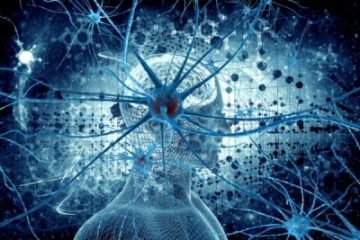
Multiple sclerosis is a pathological process with a chronic course that affects the central nervous system and is characterized by demyelinating processes of autoimmune origin.
There is standard therapy for multiple sclerosis, carried out according to clinical guidelines. There are also new methods of treating this pathology.
We will talk about the treatment of multiple sclerosis using stem cell transplantation and its effectiveness in the article.
